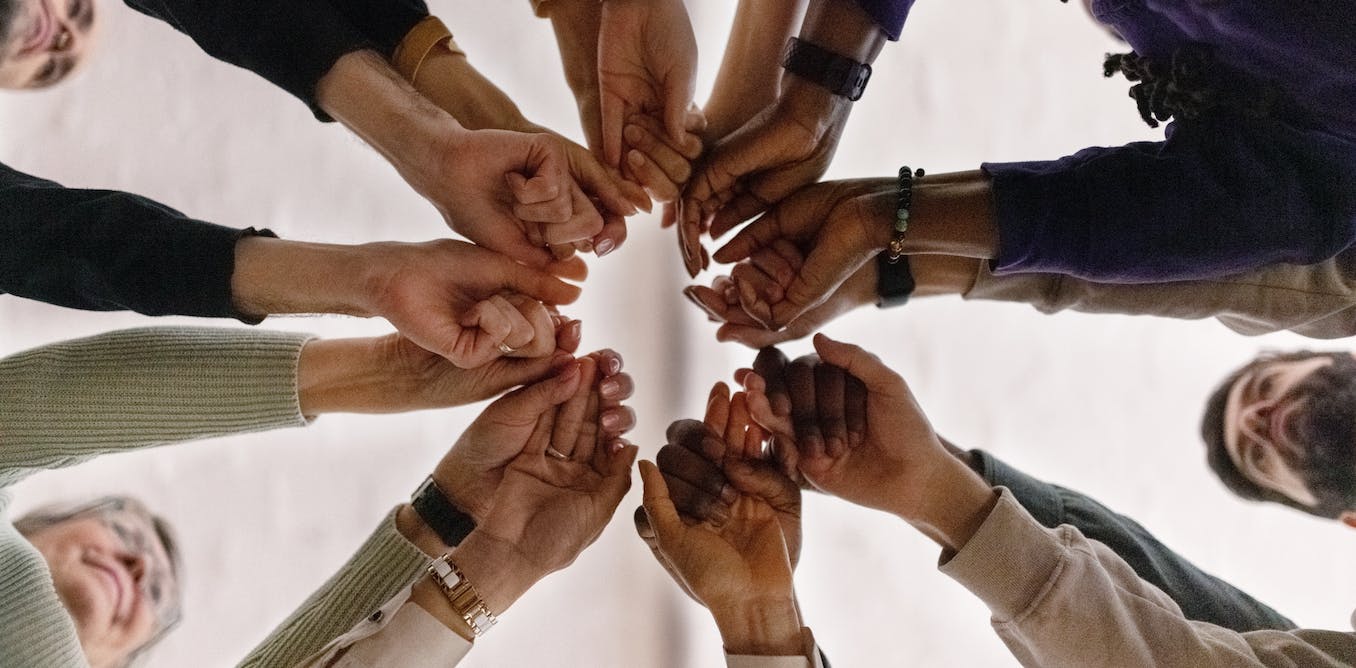In the face of multiple environmental and social crises, the long-term solution to achieving fairer and healthier societies on a liveable planet will not be a technical fix. It will be a fundamental change to the way communities work.
Although we are more connected than ever virtually, where we live continues to shape many aspects of our lives. This includes food security, the quality of services, the state of essential infrastructure, employment conditions, access to information and the ability to participate in democracy and governance.
Inequality is not only an outcome. It is a process that implicates a whole system of resource extraction, with impacts for all of us through the depletion of those resources and the polarisation of social groups through growing inequity.
For some communities, especially those already with less money, fewer decision-making opportunities and poorer connection to wider society, the impacts are worse.
For the health sector in particular, the global evidence shows a strong and enduring relationship between health outcomes and geographic areas, with people in poorer regions having shorter lives than those in wealthier places.
It is no surprise New Zealanders experience a “postcode lottery” in health. But the causes of health inequality extend beyond the influence of the now dismantled District Health Boards (DHBs).
NZ’s health system has been under pressure for decades. Reforms need to think big and long-term to be effective
Inequality is a policy and governance choice
The sum of policy attempts to reduce inequality – from taxation and regulation to health and welfare delivery – have so far not even come close to stemming the flow of resources away from local communities.
I have heard plenty of times from people working for social change in socioeconomically under-served communities about the lack of improvement, or even deterioration, despite significant financial investment.
Don’t get me wrong. Money, and more of it, is needed. But it needs to be delivered differently and accompanied by better ways of organising and working. Our current policy systems prefer blunt, siloed, distant approaches that work against learning and adapting as we go. They keep some communities from meeting basic needs, let alone being able to transform.
Societal complexity has been increasing. Growing populations and their interaction, made possible through technologies such as social media, have created “communities” of people who are geographically distant from each other. This distance has increased the challenge for our policy systems to achieve health and social goals.
The demise of DHBs shows our longstanding problem with implementation. So do primary health organisations, which were established in 2002. The latter were intended to transform local health systems, but have not yet improved equitable access, let alone spread innovative practice.
Instead, Māori, Pacific and other community organisations continue to plug local health-system gaps, despite insecure and short-term funding and the challenging community needs they respond to.
New authority could transform Māori health, but only if it’s a leader, not a partner
Where health funding hasn’t extended to the wider socioeconomic determinants such as poverty, these organisations have carried costs to provide for basic needs such as food and transport. Where contracts don’t allow long-term planning, they have provided continuity despite uncertainty.
Where a siloed policy focus discourages local cooperation, they have pooled resources. Where adaptation has not been supported and local information has no pathways, they have gathered their own evidence and used creative ways to reach populations.
A paradigm shift to acting within complexity
There is currently a burgeoning of better options for organising ourselves. These promote regenerative action and greater local focus through more sophisticated connections and whole-system goals.
Internationally, downscaled models of Doughnut economics and versions of the post-growth movement have been guiding governments to keep their activities from breaching planetary boundaries. These and other ways of focusing on enriching and keeping value within local communities have also been flourishing.
These approaches are making their way to Aotearoa but we already have our own policy lessons for strengthening local relationships to improve health and wellbeing, including:
building and linking up leadership
implementing high-trust contracting between government and communities
learning how to use scientific evidence for local action
developing insights as to what works to make collaboration and partnerships effective
building local communication capacity
recognising the value and sophistication of local social and environmental practices
and creating ways to learn from action and evolve what is working well.
But these new approaches are still marginalised by current hierarchical, technocratic and historical paradigms of organising for health. We do, however, have an opportunity to grasp some of this innovation.
New service and community networks within the current health reforms, known as “localities”, could be transformational if set up as learning systems.
Rather than being driven by data and technology, “human learning systems” support timely reflection on successes and failures, and share expert and local knowledge. They are better able to respond to changing needs and offer a way for all communities to have agency and a voice.
If done right, these new services could be central, adaptive cogs within the health system, turning information and resources into evidence-based change for better health and wellbeing. The co-benefits include strengthening societal cohesion and a head start for all communities to respond to threats such as pandemics, natural disasters and climate change.
How we organise the health system is critical. We need to think longer-term and short circuit the perpetual cycles of inequality that capitalism has wrought. Investing energy in how we organise locally could be that circuit breaker.




